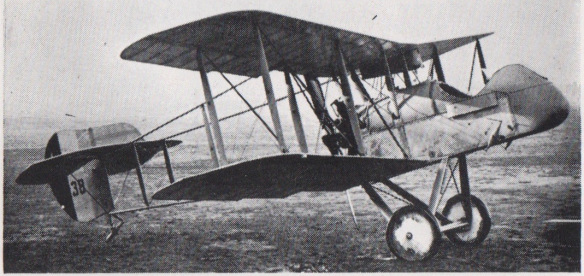Boberticus
Active member
Bleriot XI, early war reconnaissance
Before the Fokker Scourge blackened the skies over Verdun, air-combat was different. Airplanes had been invented just a decade before, these were value-able dangerous flying contraptions, used detect troop movements and stage attacks on weak points in defensive lines. Shooting other aircraft made for a difficult task, and if you shot forwards, you could damage your propeller, the only thing keeping you flying. "Dogfighting" was saved for after your duties studying troop lines were done, or after you flew a patrol to be sure there wasn't a imminent force moving positions to attack, or desperately strafing trenches with a pistol and tossing hand grenades while getting popped shot at from the ground.

The Eindecker, and its interrupter gear, changed everything. With a gun mounted for easy aiming and firing, a powerful "modern" engine, and with maneuverability and speed built into the design, this was a weapon of war, a killing machine, the first fighter. An airplane and a time that made men famous, Immelman invented fighting maneuvers while shooting terrified allied pilots out of the air, in this airplane. They literally hunted allied aircraft, dominating the skies.


Newport 11 Moraine-Saulnier N
The Allies had been working on fighters of their own, but at the time the popular Lewis gun wouldn't allow for a interrupter gear to work. so while armorers worked on a gun that would, we had to have a workaround. One trick, like with the Newport 11, was to mount the guns above the prop, on the top wing, but this was hard to aim, and hard to reload. You could also just brute force it, armor up your propeller, and just shoot through it, like the Morane-Saulnier N. However, this was still not foolproof and a fair few propellers were shot off...
The British saw that a more elegant solution was to go for a pusher configuration...

Unknown to the world at the time, soon to be famous designer Geoffrey De-Havilland, working for Airco, developed the DH2, and the fighter was just getting shipped out to the front lines mid 1915 when the Fokker Scourge hit. Suddenly, it was the only thing in the sky that was capable of staying there while the Eindecker ravaged anything else unable to hold its own. Pilots complemented its quick handling and high rate of climb, and were prolific over the skies of 1915/16 France, producing 14 "Aces". air recon was still critical to the war effort, we had to have something in the air. The little scrapper held its own, defending the skies until better aircraft could be brought onto the battlefield to drive the Germans from air superiority for good.


Adored by pilots who got over its Twitchy controls and spins caused by its powerful mid-mounted engine, air units continued to use the fighter long after it was deemed obsolete, well into 1918, and pilots were reported trying out double mounted guns and other configurations of weaponry to keep any edge they could.

Like most early WW1 aircraft, All examples of the DH2 were Scrapped long before records were even kept of destruction. When more powerful or deadly aircraft came about, they were slowly replaced in the squadrons they flew in. Once Formation flying and teamwork began being seen as the winning factor in the air, the fighter became obsolete. While there have been a few replicas built, all that truly remains of these pivotal aircraft are a few photos and stories told by pilots gone from this world.

Looking to build this as a 28 inch wingspan, shooting for around 400-500 AUW. Slot for the prop can accommodate up to 10 inches, I've got a 2212 1000kv motor a 9 inch prop, and a 1500 4s set aside. could be built as swappable, but the power pod is sorta longer than the long one, and shorter than Nerdnic's shorty.
Just gotta get some plans printed out and giver a go.

